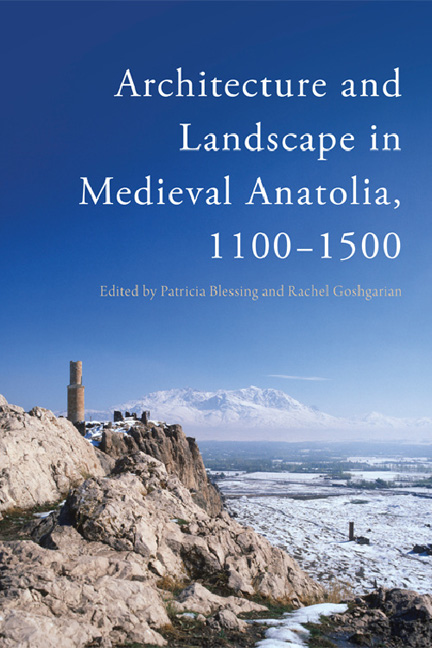Book contents
- Frontmatter
- Contents
- List of Illustrations and Tables
- Acknowledgements
- Foreword
- Map
- 1 Introduction – Space and Place: Applications to Medieval Anatolia
- Part I Building: Masons and Infrastructure
- Part II Social Groups: Akhis and Futuwwa
- Part III Exchange: Islamic and Christian Architecture
- Part IV Frameworks: Language, Geography and Identity
- Notes on Contributors
- Bibliography
- Index
1 - Introduction – Space and Place: Applications to Medieval Anatolia
Published online by Cambridge University Press: 03 January 2018
- Frontmatter
- Contents
- List of Illustrations and Tables
- Acknowledgements
- Foreword
- Map
- 1 Introduction – Space and Place: Applications to Medieval Anatolia
- Part I Building: Masons and Infrastructure
- Part II Social Groups: Akhis and Futuwwa
- Part III Exchange: Islamic and Christian Architecture
- Part IV Frameworks: Language, Geography and Identity
- Notes on Contributors
- Bibliography
- Index
Summary
Imagining late medieval Anatolia presents a unique challenge. The geographical region is most usually referred to as the Asian portion of the modern Republic of Turkey. During the twelfth–sixteenth centuries, it became home to increasing numbers of Turkish-speaking Muslims. Even the most nuanced of thinkers can experience difficulties when trying to see this series of centuries as anything other than a process of Turkification and Islamisation. And, to some, insisting that terms such as ‘Anatolia’ or ‘Lands of REm’ are most appropriate when discussing the region during this time period might seem like an historiographical version of Rene Magritte's La trahison des images, which in this case might be represented by an imaginary map of Anatolia with a cursive ‘This is not Turkey’ written underneath. Years after the original painting became a part of public discourse, Magritte explained:
The famous pipe. How people reproached me for it! And, still, could you stuff my pipe? No, right? It's just a representation. So, if I had written on my painting ‘This is a pipe’, I would have been lying!
Similarly, representing this time period in Anatolian history primarily through the lens of Turkey and Turkification keeps us from approaching a more nuanced and honest representation of the past.
The overarching goal of this volume is to use both art historical and historical approaches to expand our knowledge of complex, medieval Anatolian societies by looking beyond political structures and towards: a reconsideration of the interactions between the rural and the urban; an analysis of the relationships between architecture, culture and power; and an examination of the region's multiple geographies (perceptional, physical, political and religious). In order to widen historiographical perspectives, the contributors use a broad variety of sources (architectural, artistic, documentary and literary), including texts composed in several languages (Arabic, Armenian, Byzantine Greek, Persian and Turkish).
Each chapter's study actively engages with the permeable kind of boundaries that existed in late medieval Anatolian society, and suggests the possibility of (and need for) deeper and more nuanced examination that can help us to better understand how inclusions and exclusions, participation and indifference, proximity and distance might have been understood in the medieval Anatolian experience.
- Type
- Chapter
- Information
- Publisher: Edinburgh University PressPrint publication year: 2017



